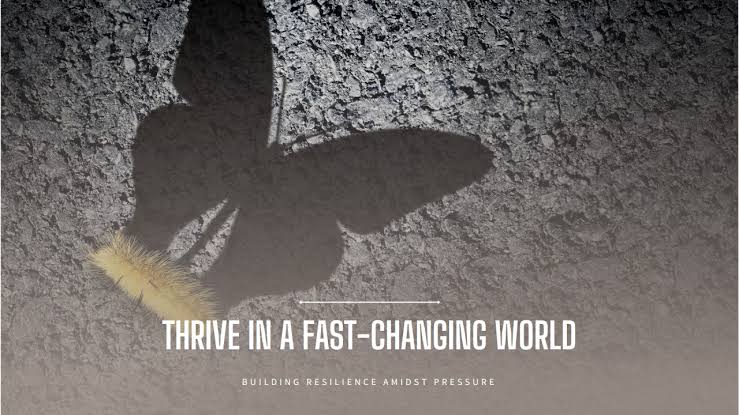In today’s fast-changing world, where uncertainty is normal, building resilience is an important skill to handle life’s pressures. As of July 2025, the need for mental, emotional, and physical strength is greater than ever. From economic challenges and climate worries to too much information and job uncertainty, people face growing demands that test their endurance and emotions every day.
Resilience is no longer a luxury but a must—it helps us recover from problems, stay calm in chaos, and keep moving forward with confidence even when the future is unclear. The good news is resilience is not something you are born with; it can be learned and strengthened with effort.
Understanding the Core of Resilience
Resilience is the ability to recover from adversity, maintain perspective in stressful situations, and adapt effectively to challenges. It doesn’t mean avoiding pain or hardship but rather learning how to confront difficulties with strength and flexibility. At its core, resilience involves emotional regulation, mental toughness, and a proactive mindset.
In a world where digital disruption and social change happen at breakneck speed, having this internal anchor is critical. As of 2025, research from institutions like the American Psychological Association and the Mental Health Commission of Canada emphasizes that resilient individuals tend to have a strong sense of purpose, supportive social networks, and an ability to learn from their experiences.
These attributes help people manage pressure without becoming overwhelmed. Understanding that resilience involves action, reflection, and self-compassion sets the foundation for building it over time.
Practicing Emotional Regulation
One of the first steps in developing resilience is learning how to regulate emotions during stress. In high-pressure environments, it’s easy to become reactive or paralyzed by fear, frustration, or anxiety. Emotional regulation involves being aware of your emotional state, accepting it without judgment, and choosing constructive ways to respond.
As of July 2025, emotional regulation techniques are being widely taught in workplaces, schools, and even digital wellness platforms. These methods include deep breathing exercises, mindfulness meditation, journaling, and cognitive reframing—where you consciously shift negative thoughts into neutral or positive ones.
By pausing and reflecting before reacting, individuals gain greater control over their decisions and interactions. This not only reduces conflict but also promotes better problem-solving and decision-making under stress.
Strengthening Mental Flexibility
Another pillar of resilience is mental flexibility—the ability to shift perspectives, reframe setbacks, and adapt to new realities. In a fast-paced world where routines are constantly disrupted by innovation, economic fluctuations, or social change, rigidity can lead to burnout.
Resilient individuals are those who can pivot without losing direction. They see failures as temporary, challenges as learning opportunities, and change as a natural part of growth. In 2025, coaching programs and leadership seminars emphasize agile thinking and adaptability as essential skills for career advancement and personal success.
Mental flexibility also includes the ability to hold two truths at once—for example, recognizing difficulty while still maintaining hope. This balanced outlook prevents people from falling into helplessness or denial when facing adversity.
Building a Supportive Network
While resilience begins internally, it is often strengthened externally through meaningful connections. A strong support network of friends, family, mentors, or peer groups provides emotional backing, practical help, and perspective during tough times.
In 2025, virtual communities and social platforms are playing a larger role in providing this sense of connection. Online support groups for mental health, professional resilience forums, and digital mentorship circles offer spaces for sharing experiences and coping strategies.
Isolation can weaken resilience, while community fosters it. Talking about challenges reduces emotional burden and opens the door to solutions that may not be visible when facing a problem alone. Having someone listen, validate your feelings, or share their own story can be a lifeline during dark moments.
Cultivating a Sense of Purpose
Purpose provides the fuel that keeps people moving forward despite setbacks. Whether it’s a personal goal, a professional mission, or a deep-seated value, having something to strive for strengthens resilience.
As of July 2025, more people are reevaluating what truly matters to them, especially in the wake of global disruptions over the past decade. A growing number are shifting toward purpose-driven living—seeking careers, lifestyles, and relationships that align with their values.
Purpose does not have to be grand. It could be as simple as caring for a family, contributing to a community, or growing as an individual. What matters is that it offers direction and meaning, which act as emotional anchors during turbulent times.
Prioritizing Physical Health and Rest
Resilience isn’t only mental—it’s also physical. A well-functioning body supports a clear mind and stable emotions. Exercise, sleep, and nutrition all play a role in resilience, helping the brain regulate stress and maintain energy levels.
In 2025, wearable technology and health apps are empowering people to track their sleep cycles, movement, and nutritional intake more accurately than ever. Data-driven wellness is being embraced by individuals seeking to maintain balance in high-pressure environments.
Daily movement, adequate hydration, balanced meals, and sufficient rest are essential habits that fortify the nervous system and build stamina. Sleep, in particular, is crucial; chronic fatigue lowers emotional tolerance and impairs focus, making it harder to bounce back from stress.
Practicing Mindfulness and Presence
Mindfulness—the ability to remain present and aware without judgment—is a powerful tool for resilience. It allows people to step back from overwhelming thoughts, observe emotions, and regain perspective.
In fast-paced environments, the mind often races ahead, worrying about future outcomes or reliving past mistakes. Mindfulness counters this by bringing focus to the current moment, reducing anxiety and fostering calmness.
As of July 2025, mindfulness is integrated into everything from leadership training to high school curricula. Simple practices like mindful breathing, body scans, or mindful walking can be done anywhere, helping individuals reset during stressful moments.
Mindfulness encourages a gentle approach to resilience. It teaches that struggling doesn’t make you weak—it makes you human. And in acknowledging this, people grow stronger.
Conclusion: Resilience as a Daily Practice
Resilience is not about never falling; it’s about rising each time with greater strength, deeper wisdom, and renewed hope. In a world that moves quickly and demands much, resilience offers a path to stay grounded, balanced, and forward-looking.
As of July 2025, tools for building resilience are more accessible than ever—from mental health apps and digital support groups to workplace wellness programs and educational resources. What matters most is making resilience a daily practice—one rooted in self-awareness, connection, adaptability, and care.
In embracing resilience, we don’t just survive the chaos of the world—we learn to thrive in it. Through each setback and each recovery, we uncover more of our strength, unlocking a deeper capacity for growth, empathy, and purpose in an ever-changing world.



